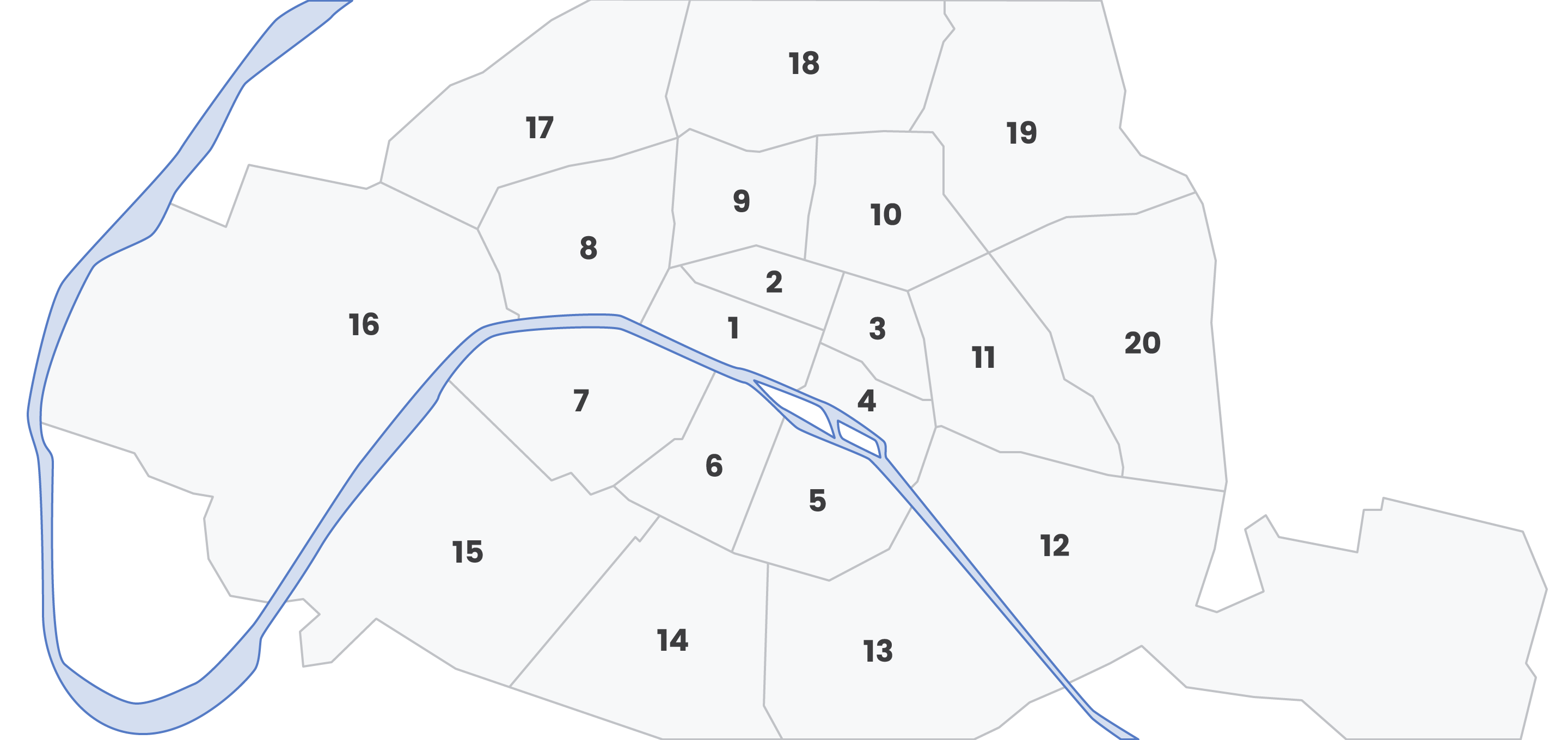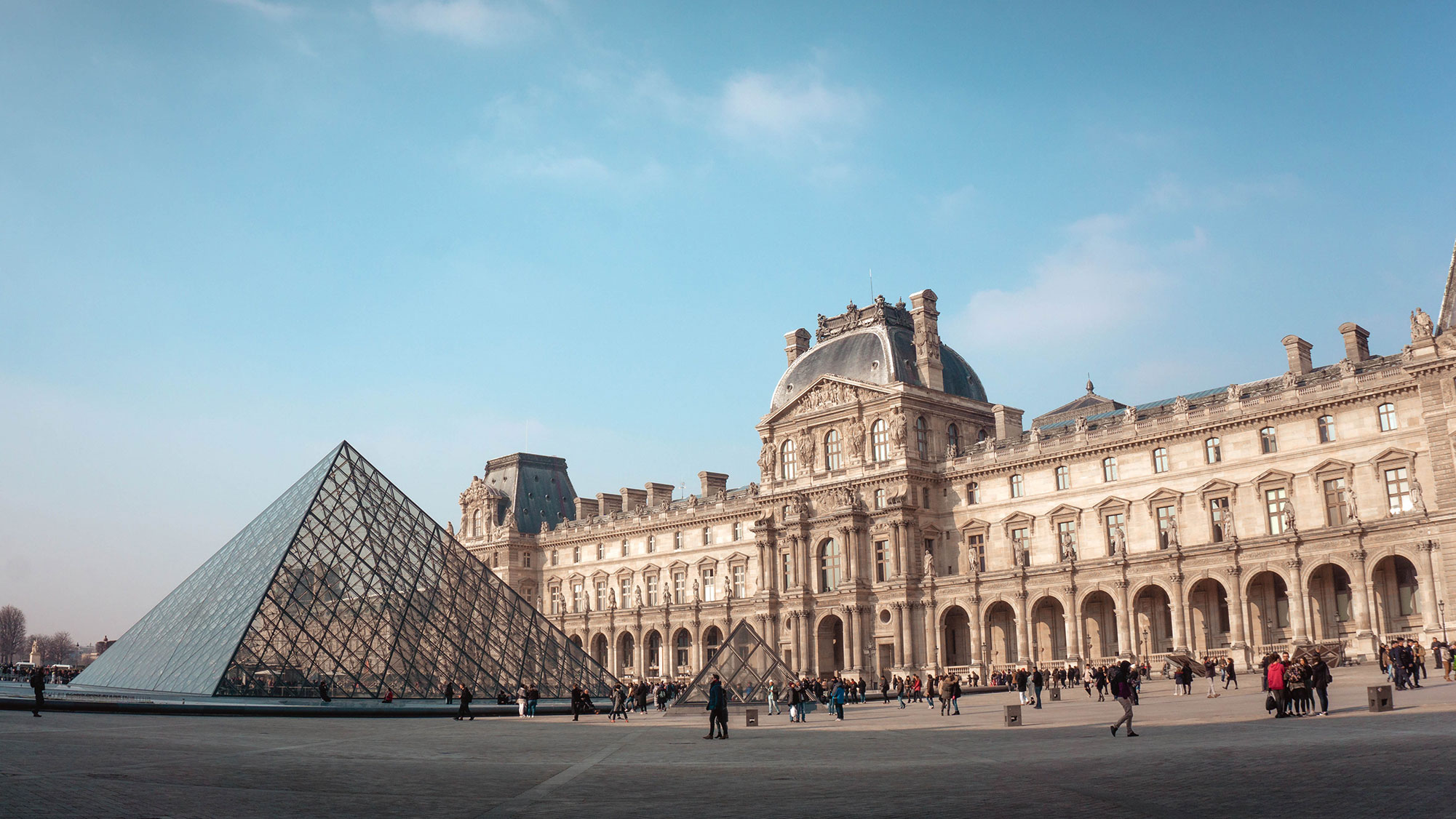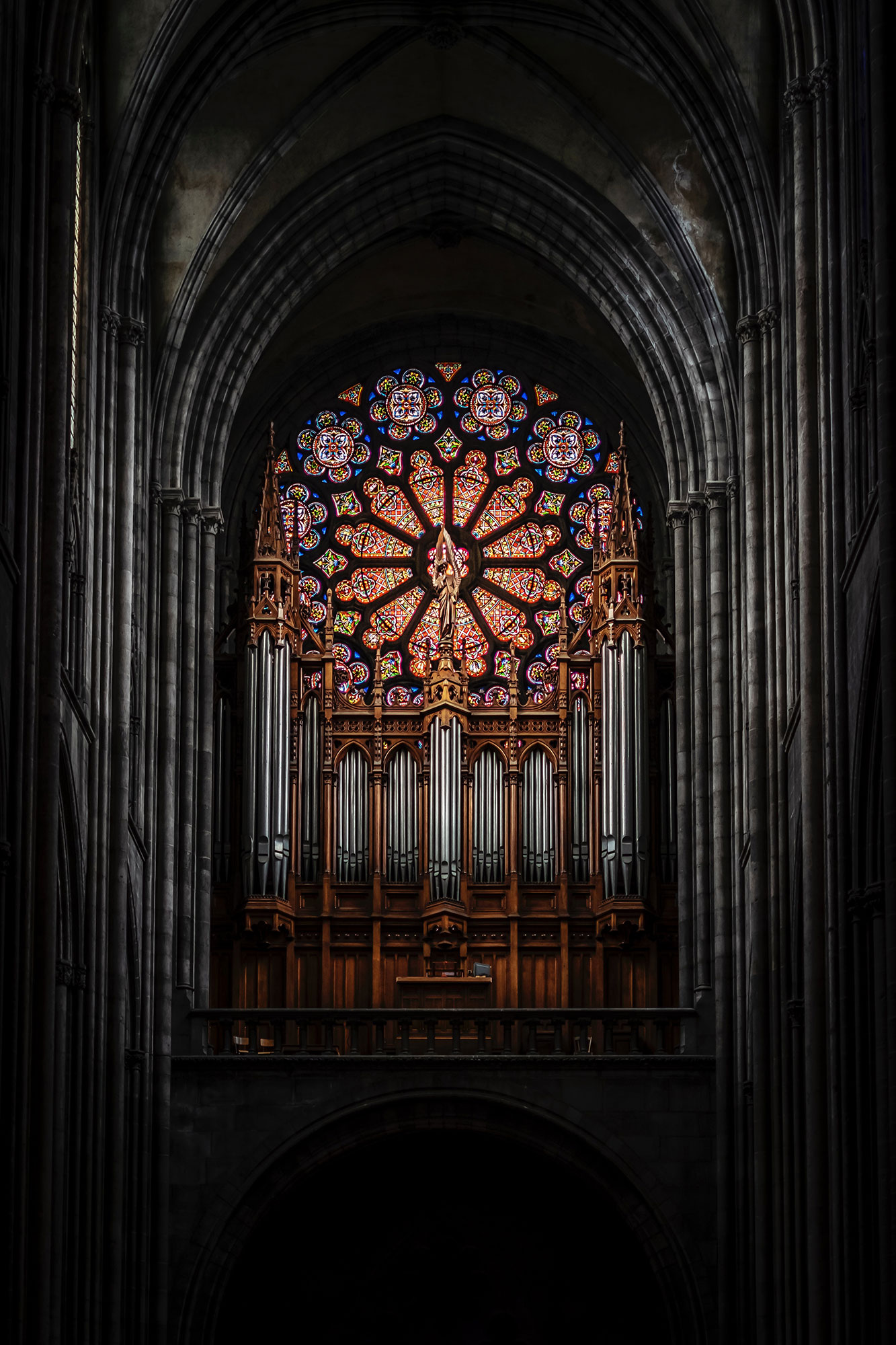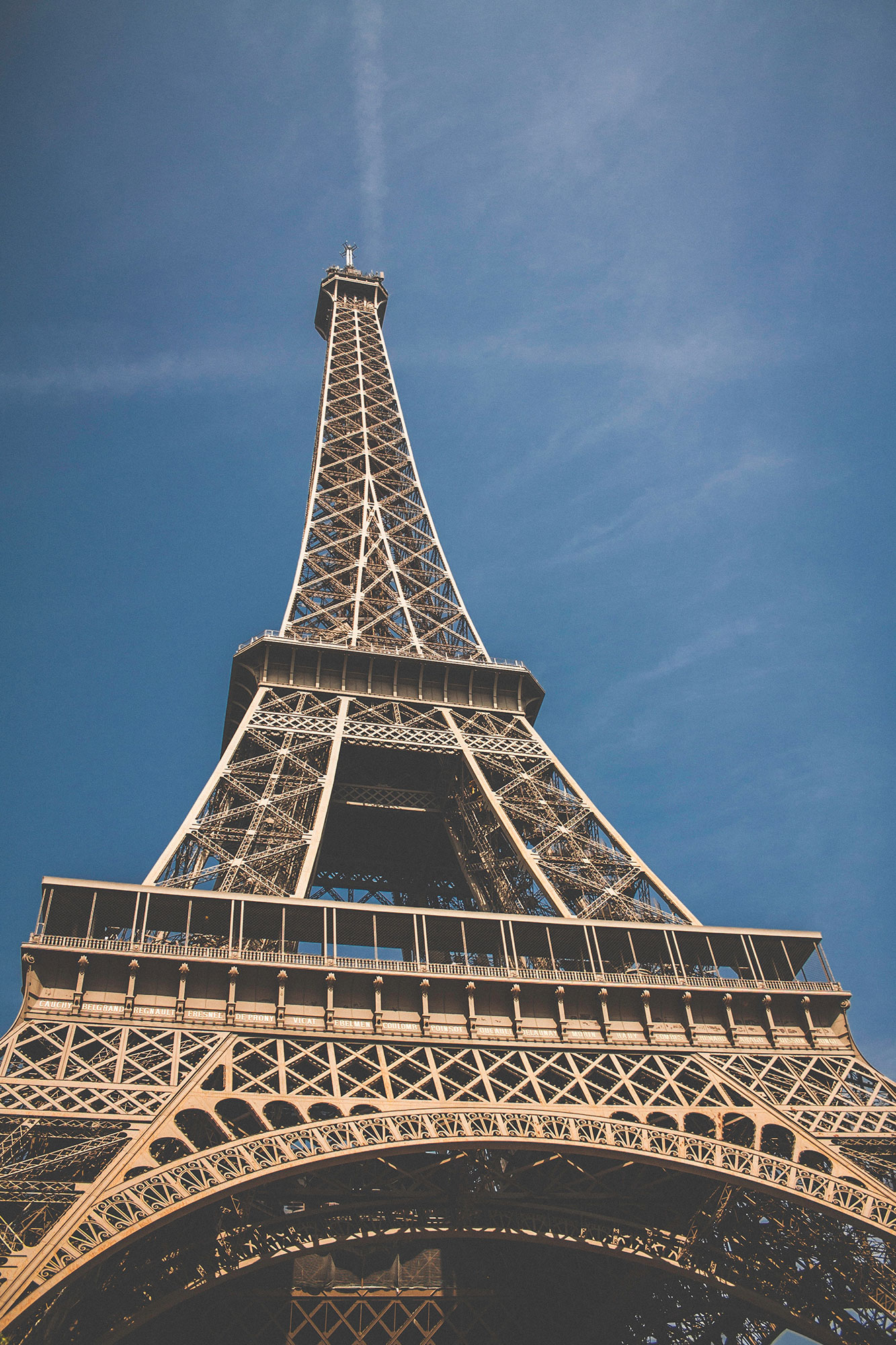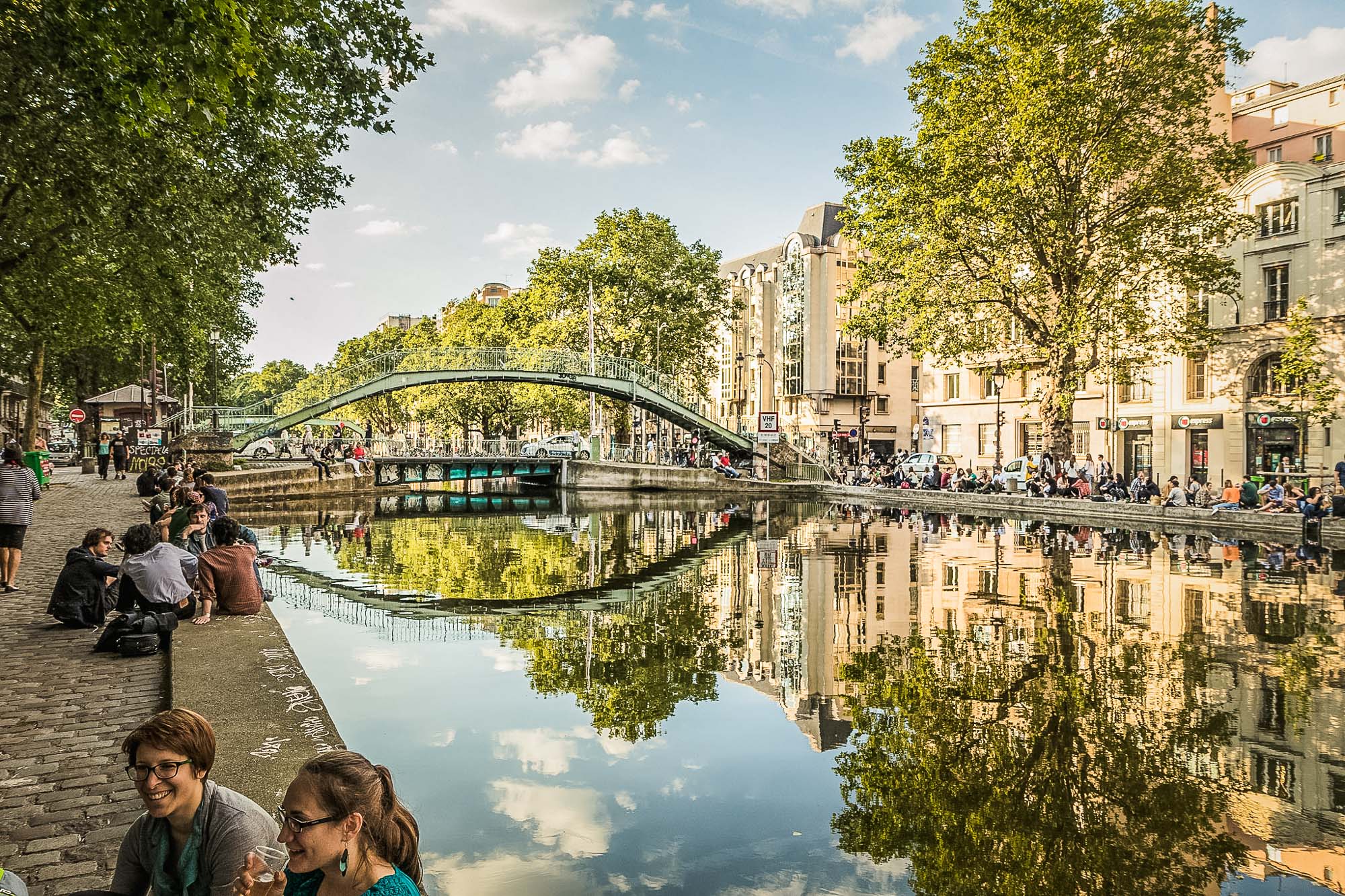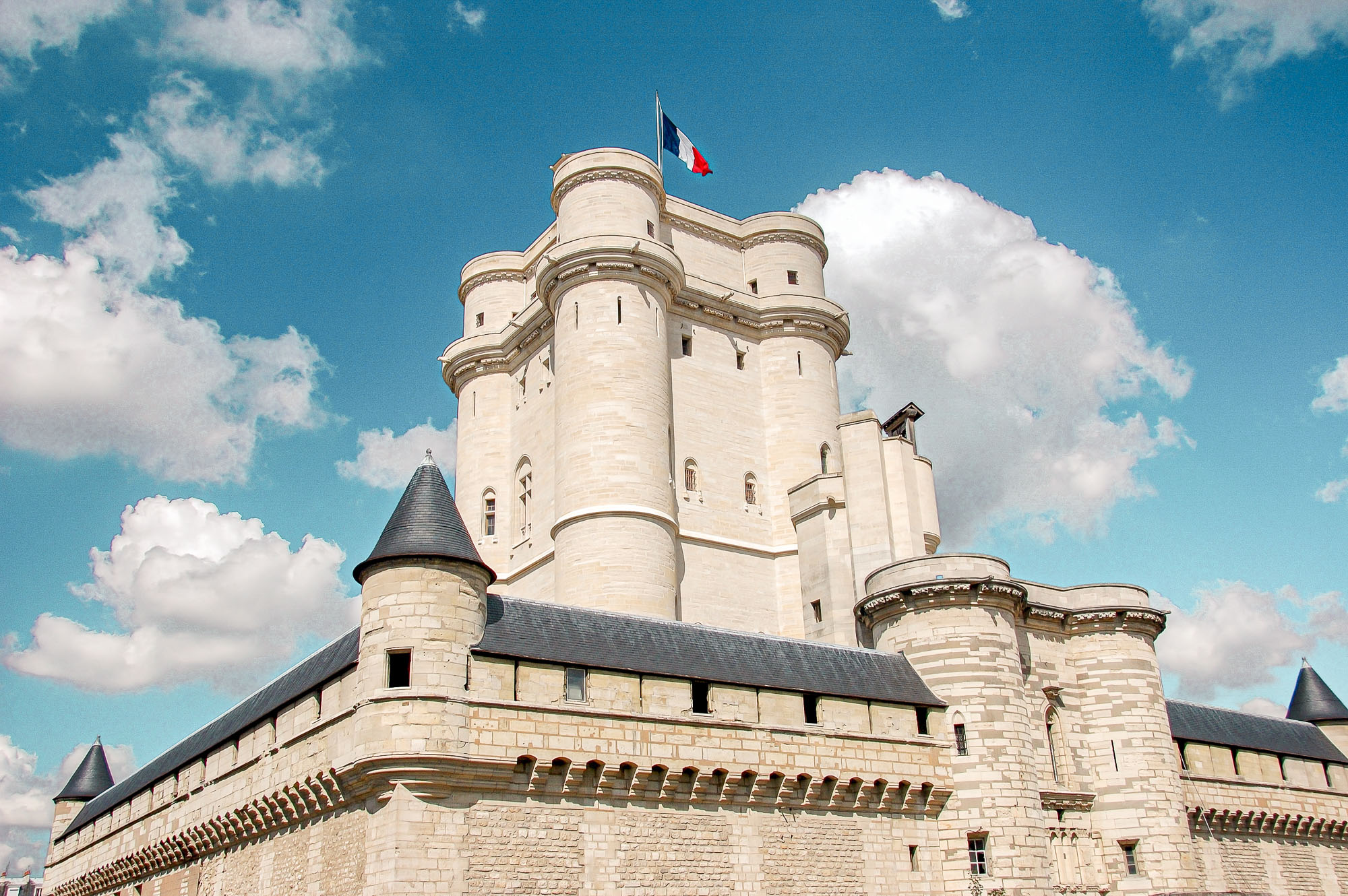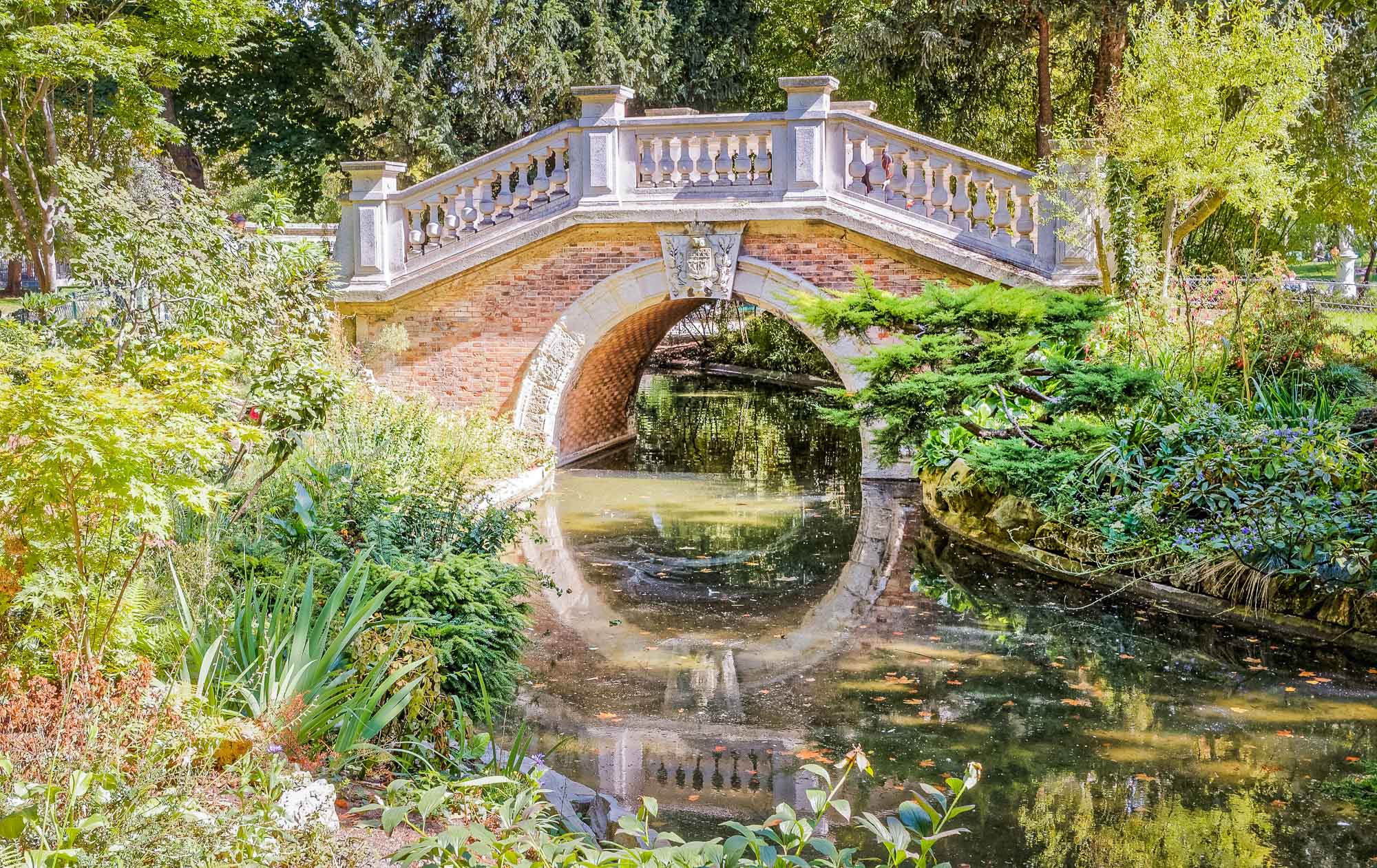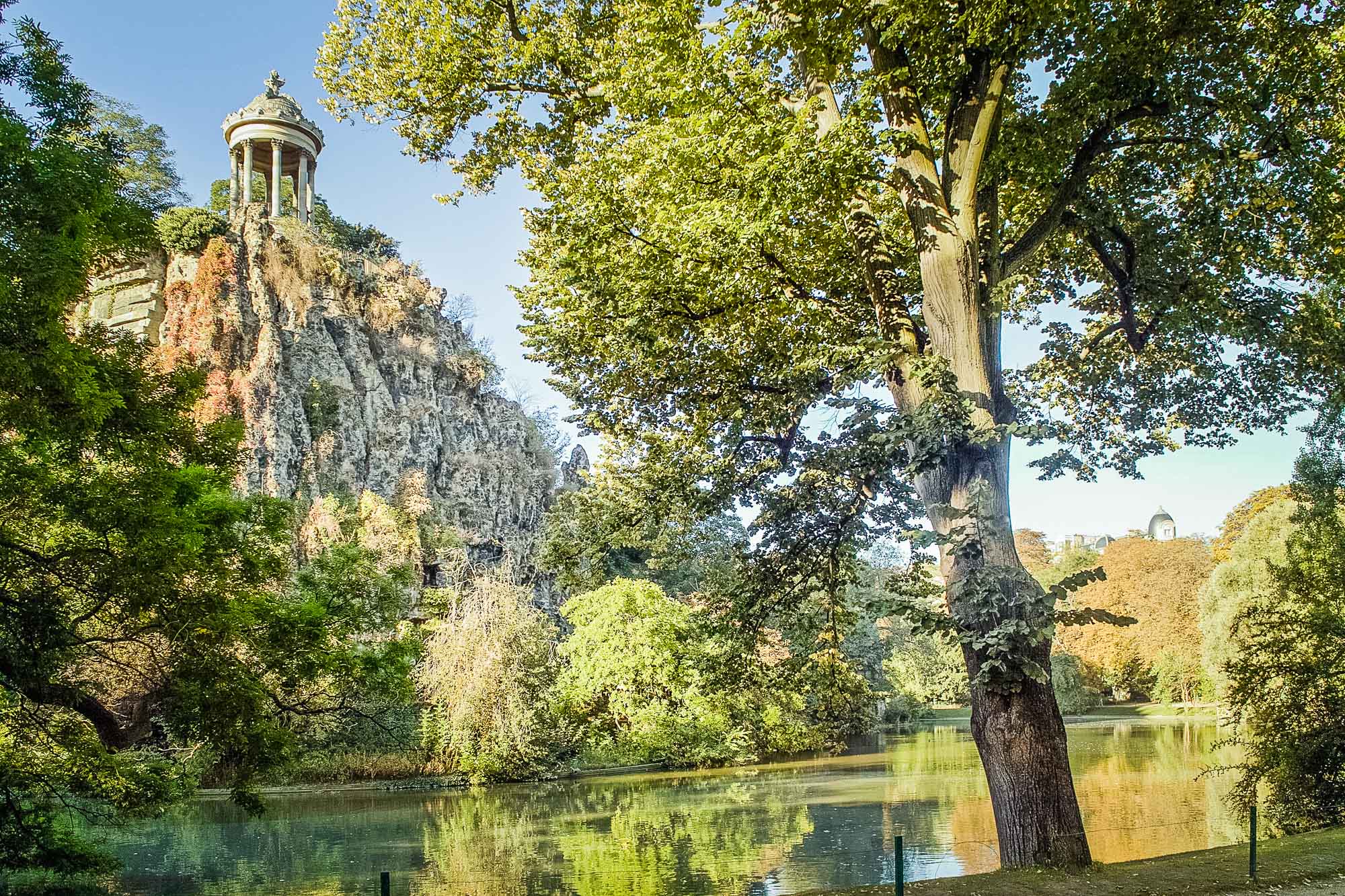There are 20 neighborhoods in Paris called arrondissements, and each of them has its own unique flavor. Defined in 1795 as 12 arrondissements, the city was later enlarged in 1859, absorbing some of the neighboring towns, changing the borders, and creating the 20 arrondissements that exist today. The interesting thing about how they are numbered is that if you look at a map, the pattern they create is an escargot (snail) shell, starting with the 1st in the middle of the city and then spiraling clockwise. Another helpful thing to know as you navigate your way around the city is that the last two digits of the postal code for a place indicate the arrondissement.
Here’s a little more about each arrondissement.
Arrondissement 2 - Bourse
Known as La Bourse, the 2nd is organized around the old stock market. Now a mixture of business and arts, there are plenty of little gems to discover, like small restaurants, wine bars, and boutiques. Head on over to Passages Couverts or L'Appartement Sézane
to do a little en vogue shopping. Or check out Frenchie Wine Bar
, one of our favorite wine bars, or its sister restaurant across the street.
Arrondissement 3 - Temple (The Marais)
The 3rd and 4th are both The Marais with the 3rd technically “northern Marais.” For us, it feels like the Paris of old. Charming, architecturally impressive with winding streets, and lots of life, there are endless boutiques, galleries, design stores, vintage shops, and hip nightlife. Also in the 3rd is the Picasso National Museum
(Musée Picasso), Museum of Hunting and Nature
(closed for renovations until fall 2020), and Marché des Enfants Rouges
(the oldest covered market). Pro tip: It’s one of the few places where lots of things are open on Sunday since it’s the Jewish Quarter, and the streets are closed to traffic so you can freely wander.
Arrondissement 5 - Panthéon (The Latin Quarter)
The Latin Quarter is known for the Sorbonne and other universities, as well as its many bookshops (like Shakespeare & Company
) and student cafes. Grab some fondue along Rue Mouffetard and don’t miss the Institut du Monde Arabe (Arab World Institute
). There’s a museum and restaurant there with delicious Middle Eastern cuisine and a great view of Notre Dame and the Île de la Cité from the rooftop (accessible for free from the restaurant on the top floor). When you’re done, you can visit Jardin des Plantes
and Rue Rollin, where both Descartes and Pascal lived.
Arrondissement 6 - Luxembourg (Saint Germain des Prés)
The 6th is home to classic Parisian shops and cafes on Boulevard Saint-Germain and the breathtaking Luxembourg Gardens. Come here for fancy, charming, timeless Paris—a great area to get lost in and find endless treasures. You’ll also find the beautiful churches of Église de Saint Germain des Prés
and Église Saint-Sulpice
, the Odéon Theatre
and the world famous cafe Les Deux Magots
, where great writers like Hemingway and Camus spent a lot of time, and now both locals and tourists alike enjoy.
Arrondissement 7 - Palais Bourbon
This is a great place to start if you are a first timer in Paris. It has the Eiffel Tower
, Champs du Mars, Rue St Dominique, Rue de Bac, Les Invalides
and Le Bon Marché
(one of the greatest department store epiceries). It’s also home to Musée d'Orsay
, popular for both its impressionist art and the building’s architecture as it’s the former Orsay railway station. If the weather is nice, visit the Musée Rodin
sculpture garden and stop by the La Grande Épicerie de Paris
(across from Le Bon Marché) for a snack at one of the stalls (or to buy high-end gourmet treats!).
Arrondissement 8 - L'Elysèe
Primarily known for the Champs-Elysèes and Arc de Triomphe
, you can find high-end brands and hotels where you can pop in for a glass of champagne to rest your feet and admire the Parisian fashionistas. The Grand Palais
is also worth a visit and has spectacular rotating exhibits.
Arrondissement 9 - l'Opéra
You can find many of Paris’s department stores in the Opera, like les grands magasins Galeries Lafayette
, and Printemps Haussmann
. There are breathtaking Christmas lights and windows around the holidays. Be prepared for crowds!
Arrondissement 10 - l'Entrepôt
We hear from our local friends that the 10th is a bit edgy and up and coming. Canal St. Martin has a lot of cool boutiques and cafes, perfect for taking a stroll.
Arrondissement 11 - Popincourt
The 11th is also very trendy with cool art (keep your eyes peeled for rogue street art) and includes the Place de la Bastille, Rue Oberkampf, and Rue de Lappe where you can find hip nightclubs, bars, and restaurants. We often venture here for dinner, whether for old world bistros like Bistrot Paul Bert
or for inventive, edgier cuisine like Le Châteaubriand
.
Arrondissement 12 - Reuilly
Between the Parc de Bercy and Daumesnil, the 12th includes the curious Coulée Verte René-Dumont
(formerly known as the Promenade Plantée), which is a park built on an old elevated railway. On the outskirts of the 12th is also Château de Vincennes
, a royal fortress worth a visit.
Arrondissement 13 - Gobelin
Definitely a local neighborhood, the 13th was where the working class used to live and is now known as the Asian district.
Arrondissement 15 - Vaugirard
The largest district, the 15th is a more residential neighborhood where you can casually shop away from the crowds and eat eclectic food. It also includes one of the three islands —- Swan Island —- and the Statue of Liberty (fun fact: France gave the U.S. the Statue of Liberty in 1886, and the Americans gave Paris a smaller version of the same statue in 1889 to commemorate the centennial of the French Revolution -- this is where it sits).
Arrondissement 16 - Passy
Iconic views of the Eiffel Tower from Trocadéro give way to a charming residential neighborhood with local shops and dining. It’s an “old money neighborhood” that has lovely local bakeries and cheese shops. Take a jog near the Bois de Boulogne or visit the beautiful and modern design of the Fondation Louis Vuitton
.
Arrondissement 17 - Batignolles Monceau
Another residential yet eclectic neighborhood, we recommend strolling the Batignolles outdoor markets to get local and fresh goodies and then take your purchases and enjoy a picnic in Parc Monceau
.
Arrondissement 18 - Butte-Montmartre
You feel like you’re walking on the set of Amelie in Montmartre. Quaint and artistic, Montmartre is a fun-loving and strollable neighborhood. Visit Sacré-Cœur
and sit on the steps to watch the sunset.
Arrondissement 19 - Buttes Chaumont
More Parisians than tourists, enjoy Parc des Buttes-Chaumont
for an afternoon picnic or take in a show at one of the many attractions in Parc De La Villette
, which hosts concerts, movies, summer festivals and much more.
Arrondissement 20 - Ménilmontant
On the eastern side of the city and off the beaten path for many tourists, the 20th is known for its many ethnic shops and restaurants. Stop by to pay your respects at Père Lachaise Cemetery
(the largest and first garden cemetery in Paris) or explore the Belleville or Ménilmontant neighborhoods where Edith Piaf once lived.
